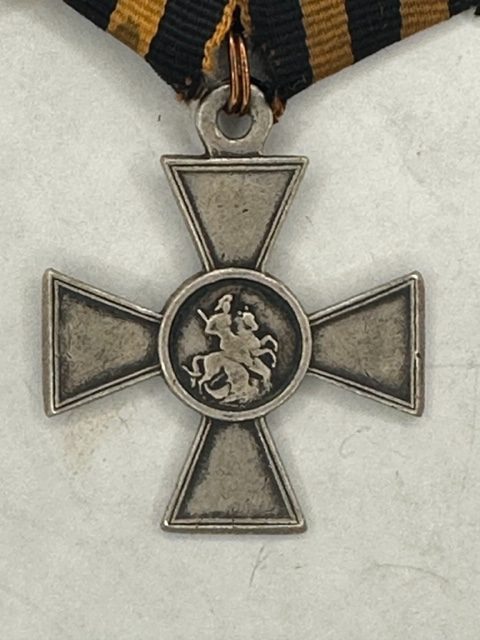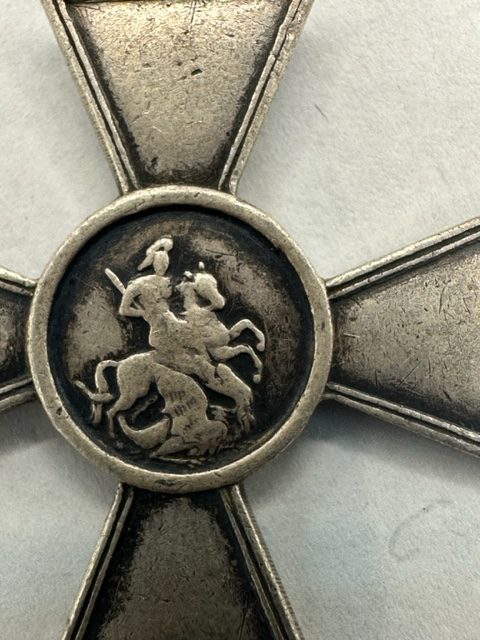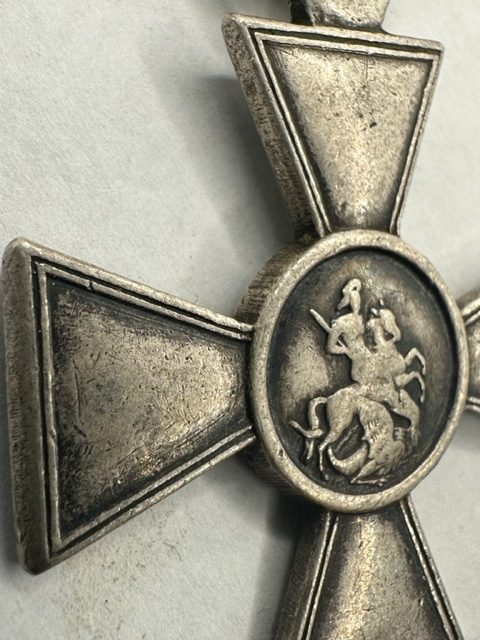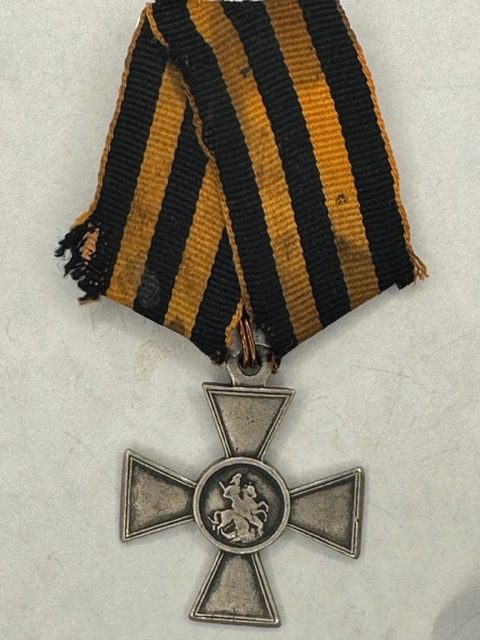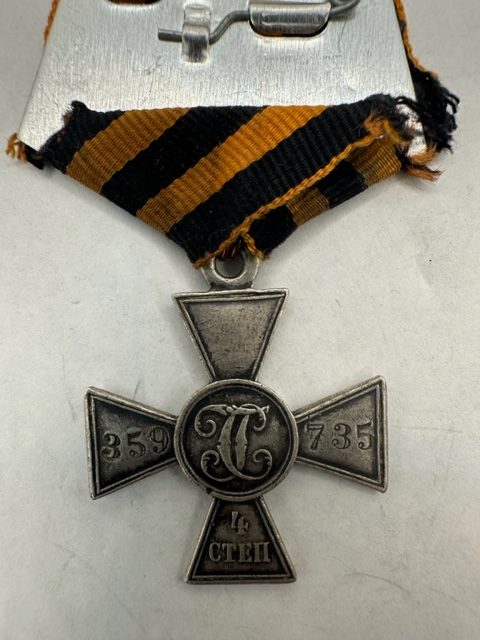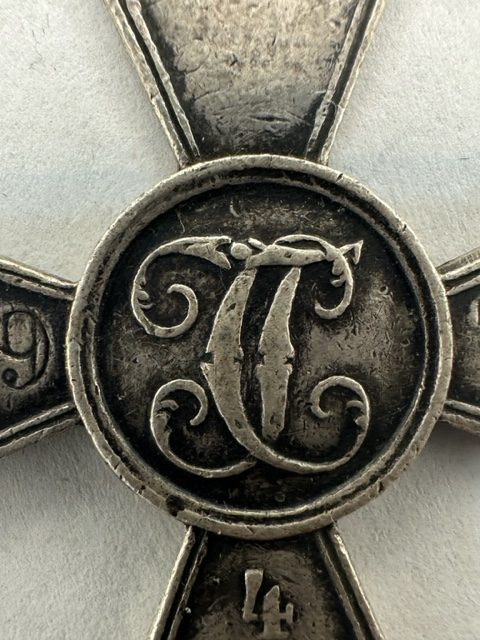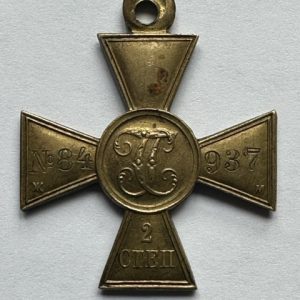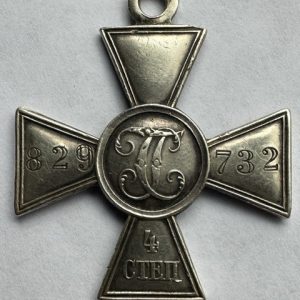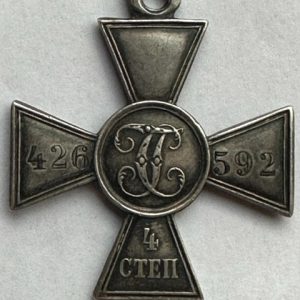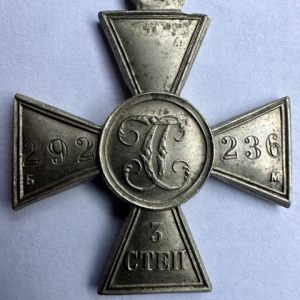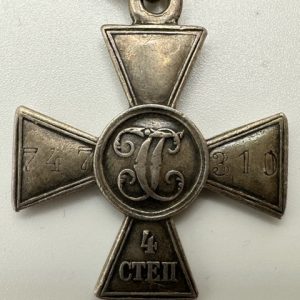115 infantry Vyazemsky General Nesvetaev Regiment has been in existence since August 20, 1798, when a two-battalion musketeer regiment named after him was formed in Yaroslavl by Major General Leitner. The following year, it was renamed the Musketeer Major General Mansurov Regiment. On January 20, 1800, the regiment began to be named after the new chief, Major General Nesvetaev.
Cross of St George was established in the February 1807 decree of Emperor Alexander I, it was intended as a reward for “undaunted courage” by the lower ranks (soldiers, sailors and NCOs) of the military. There was only a single class with no restriction as to the number of awards per person.
An 1856 royal decree divided the decoration into four classes. A person initially received the fourth class and would subsequently be promoted to higher classes for further acts of bravery; one who received all four classes was called a “Full Cavalier of Saint George”. The first and second classes were made of gold, the third and fourth were made of silver. The numbering on the reverse began anew for each class of the decoration.
A 1913 royal decree officialized the name “Cross of Saint George” and the numbering began anew. In 1915, due to war shortages, the first and second class decorations were made of lower grade gold (60 percent gold, 39.5 percent silver, 0.5 percent copper). The third and fourth class decorations were produced in the same 99 percent silver. There were 26,950 first class crosses (No. 5531 to No. 32,840) and 52,900 second class crosses (No. 65,030 to No. 12,131) produced in low-grade gold. Approximate number of St. George Crosses awarded from 1914 to 1917:
- 1st class: 33,000
- 2nd class: 65,000
- 3rd class: 289,000
- 4th class: 1.2 million


